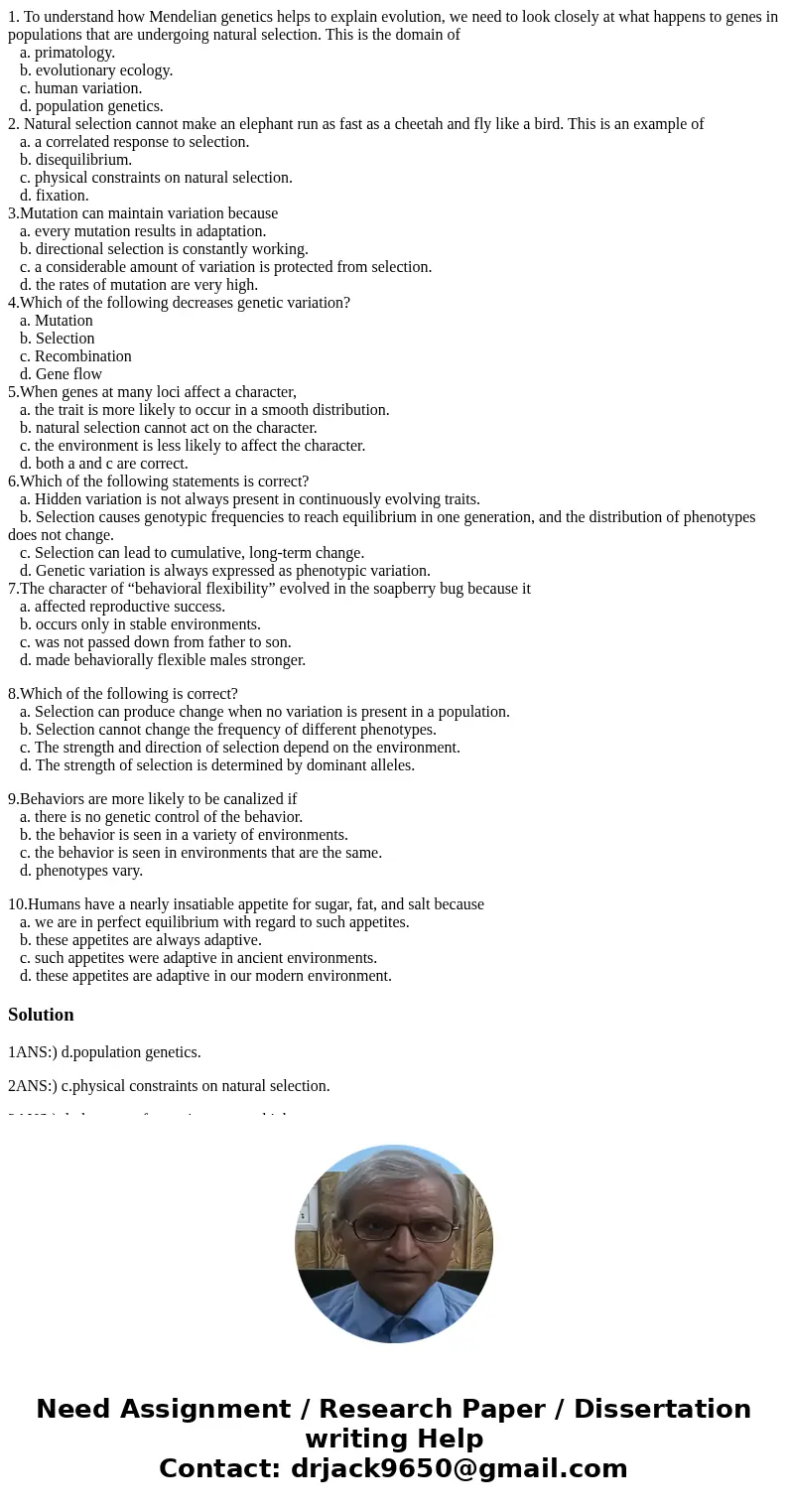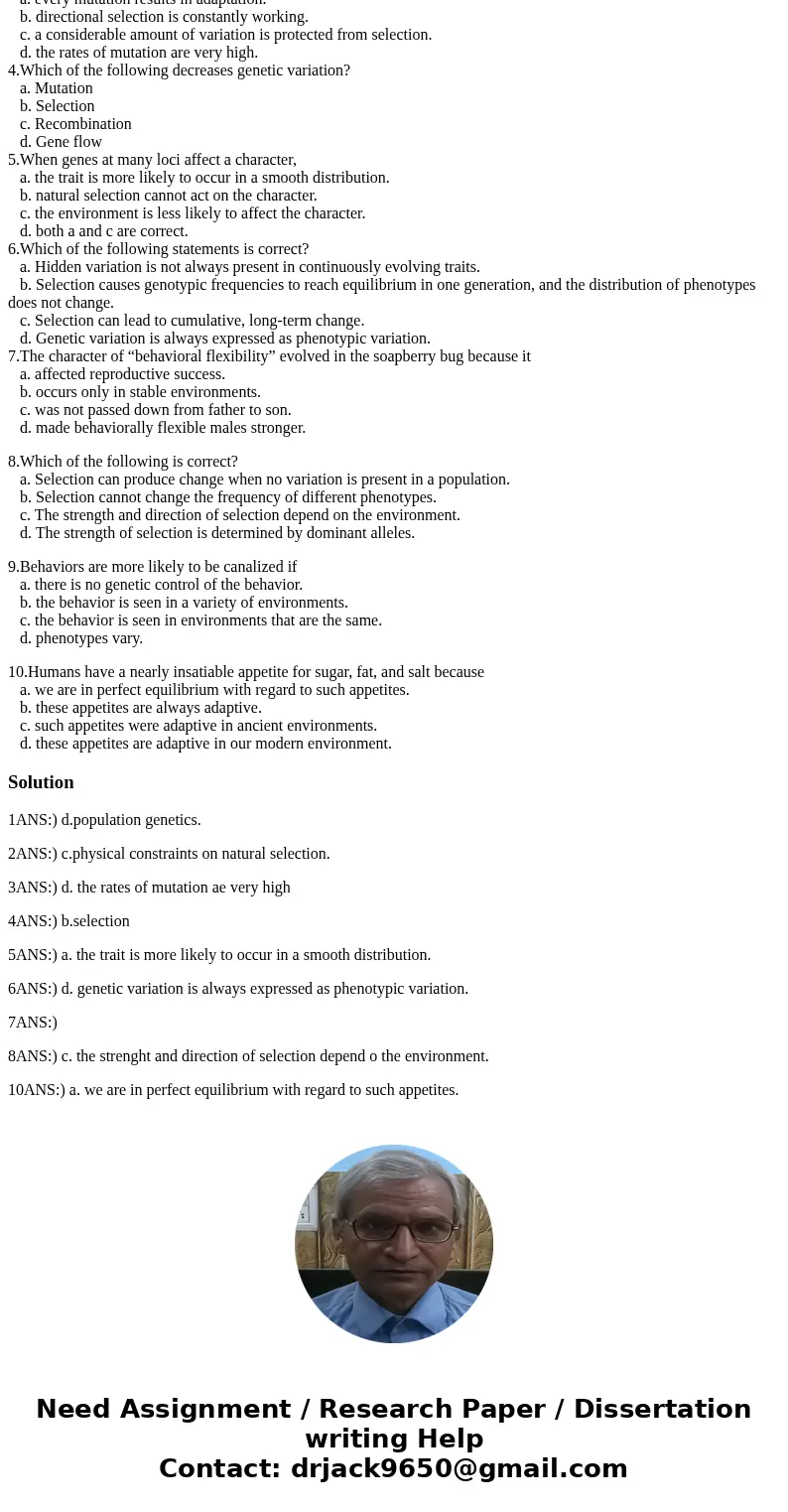1 To understand how Mendelian genetics helps to explain evol
1. To understand how Mendelian genetics helps to explain evolution, we need to look closely at what happens to genes in populations that are undergoing natural selection. This is the domain of
a. primatology.
b. evolutionary ecology.
c. human variation.
d. population genetics.
2. Natural selection cannot make an elephant run as fast as a cheetah and fly like a bird. This is an example of
a. a correlated response to selection.
b. disequilibrium.
c. physical constraints on natural selection.
d. fixation.
3.Mutation can maintain variation because
a. every mutation results in adaptation.
b. directional selection is constantly working.
c. a considerable amount of variation is protected from selection.
d. the rates of mutation are very high.
4.Which of the following decreases genetic variation?
a. Mutation
b. Selection
c. Recombination
d. Gene flow
5.When genes at many loci affect a character,
a. the trait is more likely to occur in a smooth distribution.
b. natural selection cannot act on the character.
c. the environment is less likely to affect the character.
d. both a and c are correct.
6.Which of the following statements is correct?
a. Hidden variation is not always present in continuously evolving traits.
b. Selection causes genotypic frequencies to reach equilibrium in one generation, and the distribution of phenotypes does not change.
c. Selection can lead to cumulative, long-term change.
d. Genetic variation is always expressed as phenotypic variation.
7.The character of “behavioral flexibility” evolved in the soapberry bug because it
a. affected reproductive success.
b. occurs only in stable environments.
c. was not passed down from father to son.
d. made behaviorally flexible males stronger.
8.Which of the following is correct?
a. Selection can produce change when no variation is present in a population.
b. Selection cannot change the frequency of different phenotypes.
c. The strength and direction of selection depend on the environment.
d. The strength of selection is determined by dominant alleles.
9.Behaviors are more likely to be canalized if
a. there is no genetic control of the behavior.
b. the behavior is seen in a variety of environments.
c. the behavior is seen in environments that are the same.
d. phenotypes vary.
10.Humans have a nearly insatiable appetite for sugar, fat, and salt because
a. we are in perfect equilibrium with regard to such appetites.
b. these appetites are always adaptive.
c. such appetites were adaptive in ancient environments.
d. these appetites are adaptive in our modern environment.
Solution
1ANS:) d.population genetics.
2ANS:) c.physical constraints on natural selection.
3ANS:) d. the rates of mutation ae very high
4ANS:) b.selection
5ANS:) a. the trait is more likely to occur in a smooth distribution.
6ANS:) d. genetic variation is always expressed as phenotypic variation.
7ANS:)
8ANS:) c. the strenght and direction of selection depend o the environment.
10ANS:) a. we are in perfect equilibrium with regard to such appetites.


 Homework Sourse
Homework Sourse